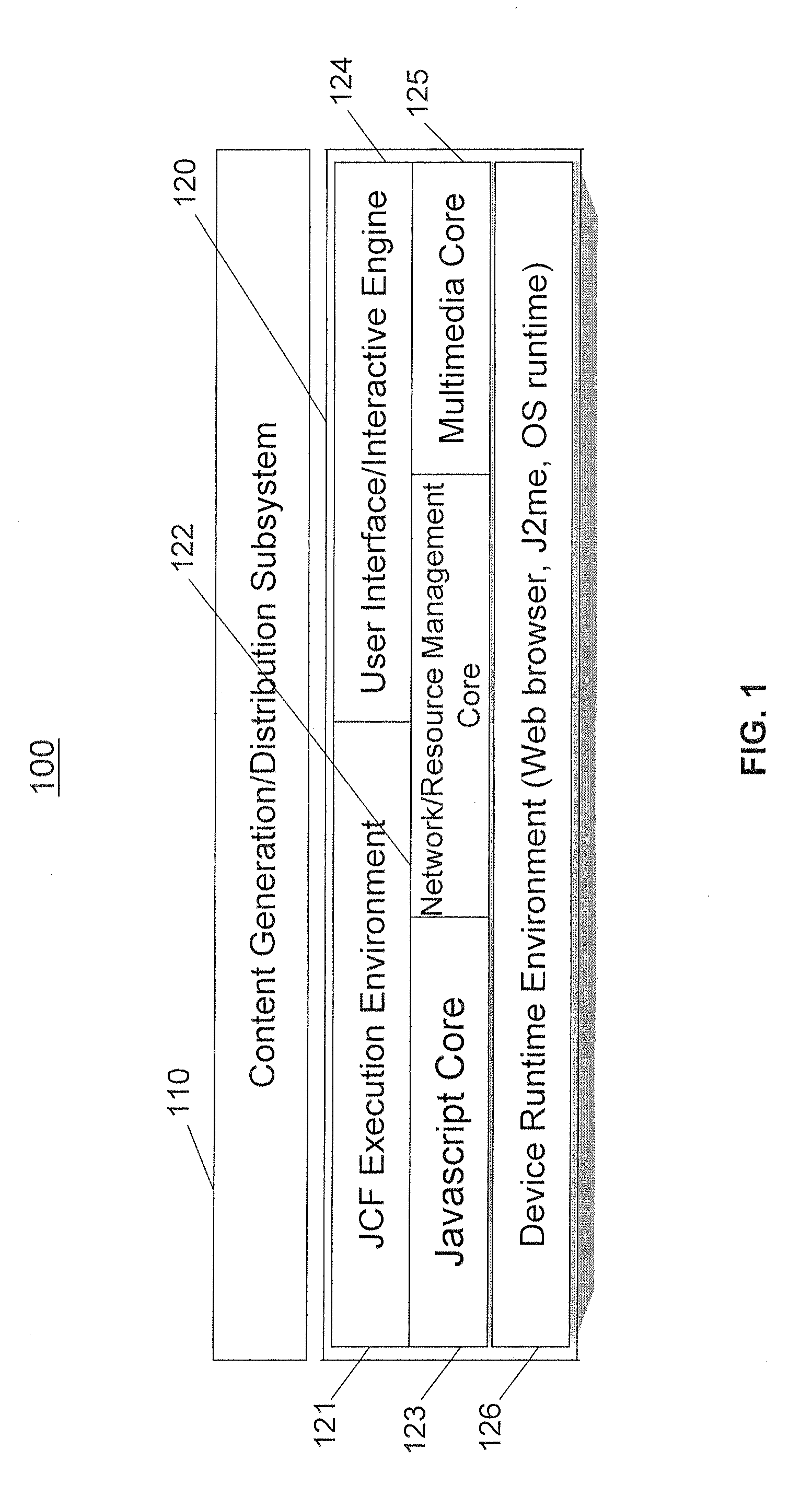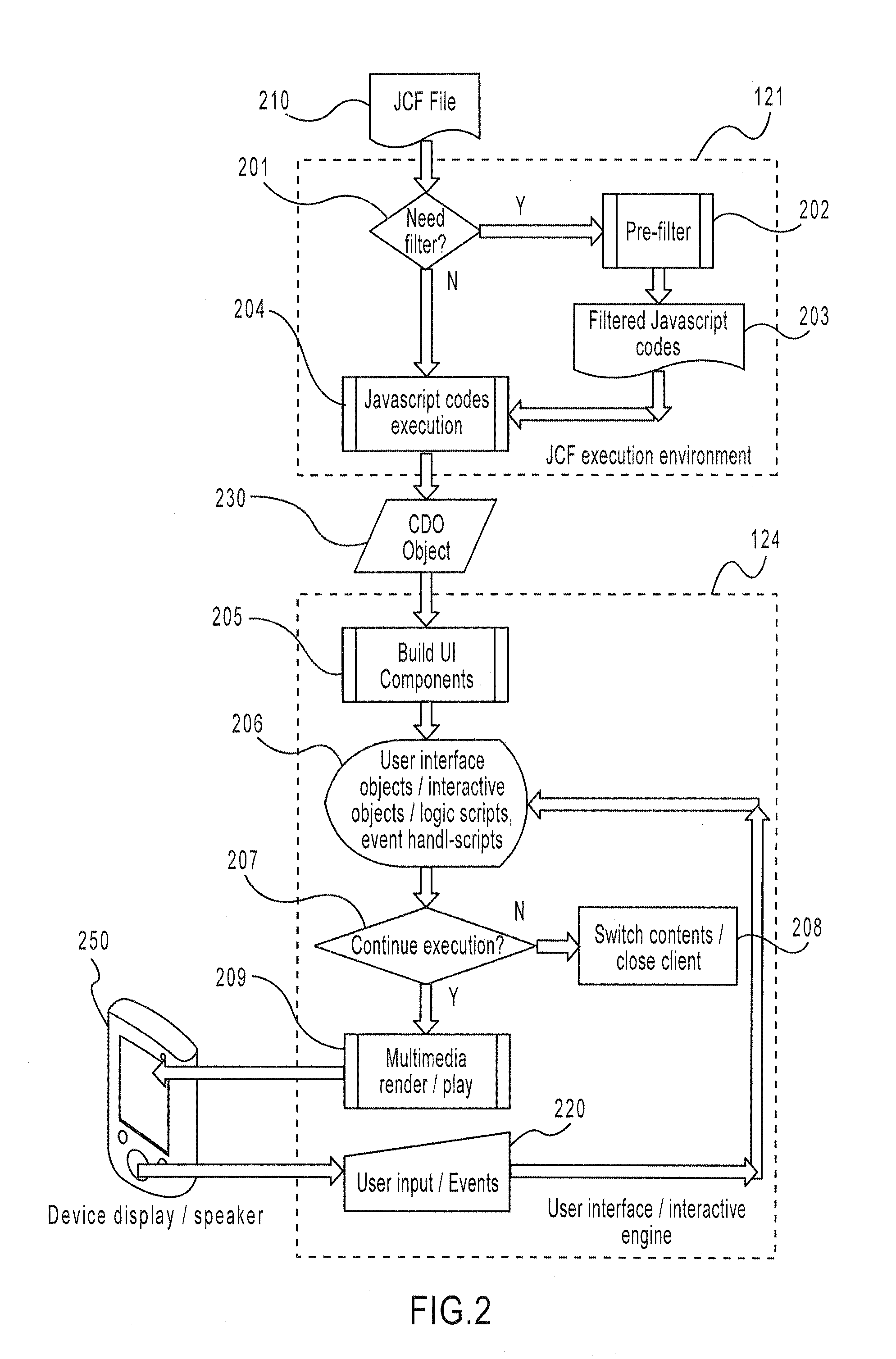Mobile device application framework
a mobile device and application framework technology, applied in the field of mobile device application frameworks, can solve the problems of cumbersome application development, lack of mobile device standardization, and use of xml and hypertext markup languages (html), and achieve the effect of ease and flexibility in content modification
- Summary
- Abstract
- Description
- Claims
- Application Information
AI Technical Summary
Benefits of technology
Problems solved by technology
Method used
Image
Examples
Embodiment Construction
[0024]According to aspects of the present invention, the open system may be carried out under a Javascript content-distribution framework (JCF). JCF is a cross-platform rich web / multimedia content distribution system and the core of the JCF is a content carrying file, interchangeably referred to herein as a JCF file or a Javascript program. The result of execution of the JCF file on a client device, such as a mobile device, is a DOM standard based content-defined object (CDO), which describes a logic structure of a dynamic content (e.g., a web-page), a user interface graphical layout, and user interactive scripts. A JCF client may render the content (e.g., a web-page) on a client device and interact with user inputs. In accordance with aspects of the present invention, the JCF client may be any Java Two Micro Edition (J2ME) enabled mobile device, any Open OS enabled smart device, such as a Symbian OS phone or a Windows Mobile phone, or any other device having similar features. The J...
PUM
 Login to View More
Login to View More Abstract
Description
Claims
Application Information
 Login to View More
Login to View More - R&D
- Intellectual Property
- Life Sciences
- Materials
- Tech Scout
- Unparalleled Data Quality
- Higher Quality Content
- 60% Fewer Hallucinations
Browse by: Latest US Patents, China's latest patents, Technical Efficacy Thesaurus, Application Domain, Technology Topic, Popular Technical Reports.
© 2025 PatSnap. All rights reserved.Legal|Privacy policy|Modern Slavery Act Transparency Statement|Sitemap|About US| Contact US: help@patsnap.com



